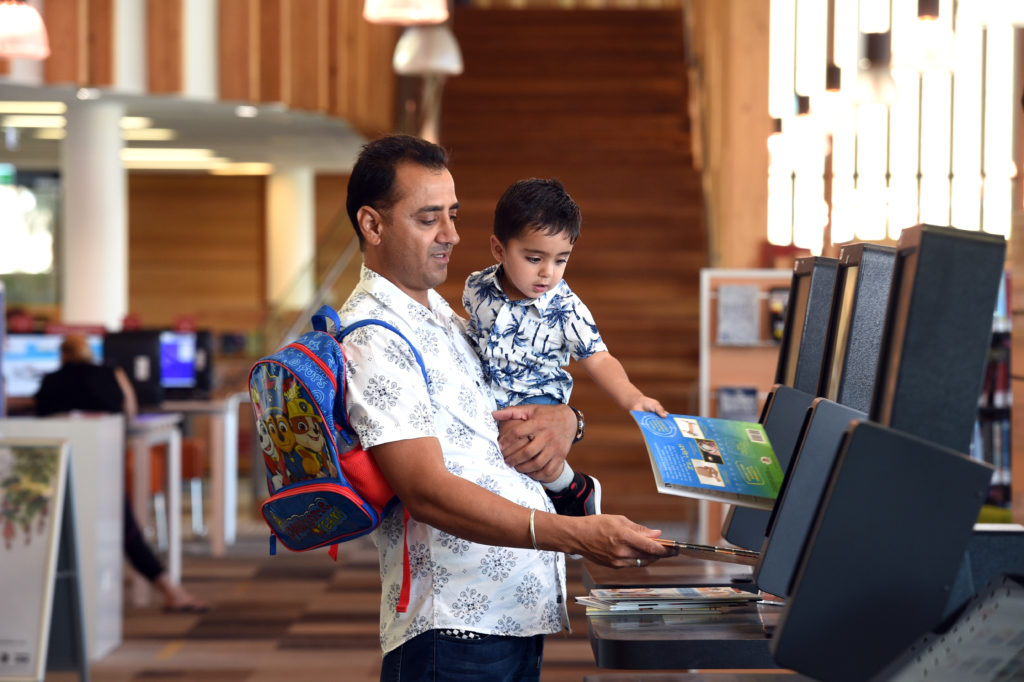
A recent survey of library users about future public library priorities has confirmed that libraries are people places where books rule.
The survey was conducted online and in person in a mix of eight Victorian public libraries in November 2021. The results incorporate feedback from over 1,000 respondents.
A summary report, produced by I & J Management Services, was released this week by State Library Victoria and Public Libraries Victoria. Among the stand-out findings:
- Libraries are a people place. Libraries are used by people from all walks of life – the young, the old, families and single people, people from different cultural backgrounds, school and tertiary students, the employed and the unemployed, people on high and low incomes, people with and without home internet access, people who are library members and people who are not. 81% of survey respondents consider themselves regular library users and 49% sometimes come to the library with other people – their children, spouse, parents or friends.
- Books rule, but not all the time and not for everyone. 82% of library users borrow books or magazines from the library – clearly the single most common activity. But among the top 10 things people do at the library are a mix of activities that involve the collection, technology services, programs, places and spaces and highly valued staff assistance. Of the 26 activities listed in the survey, nearly half of the respondents identified between 3 and 6 services they use, with 16% accessing more than 10 different library services. The second most common activity for 56% of respondents was ‘Ask the library staff for help’.
- Post-COVID libraries must retain their key characteristics. The speed and agility of public libraries in responding to COVID restrictions on service access have been well-documented. Survey feedback reinforced the high regard library users had for the way libraries shifted to click and collect, online programming and other service models. Most library users are excited to get back to their library (66%) although there are some (11%) who remain cautious about returning and the continued risk of exposure to COVID in the community. Libraries can support community recovery from COVID through doing what they do and have done – returning to normal opening hours and service levels as soon as possible, implementing COVID-safe protocols, and being the safe welcoming open inclusive places they are known to be.
- Libraries are much more than just a service point. Library users rated the importance of future public library priorities. While the No. 1 priority is to be a lending service, libraries are also seen to play an important role in literacy development, supporting mental health and wellbeing, facilitating community connections, digital inclusion and providing somewhere to just be. The top 7 future priorities were:
– Providing access to books, magazines, DVDs and other resources (average score 4.4 out of 5)
– Assisting with children’s literacy and education (4.0)
– Providing access to educational resources and support (3.9)
– Supporting my mental health and wellbeing (3.7)
– Connecting with my community (3.7)
– Providing somewhere to just be (3.7)
– Providing access to computers and wifi (3.7). - Libraries mean different things to different people. The survey highlighted significant variation in the way that different population cohorts, perceive, use and value the library, demonstrating why public libraries have such broad appeal across the community. The importance of free access to library collections, services and spaces was particularly noted by vulnerable and disadvantaged community groups. While ‘on average’ most library users place low importance on library support for job seeking, submitting job applications and developing job-ready skills, these are seen as very important to job seekers and the unemployed. Similar, library use and perceived value was quite different (in some cases) for:
– people in metropolitan and regional areas
– people under the age of 25, young families and people aged 70 years or more
– students
– job seekers and the unemployed
– people on low incomes
– people with no home internet access
– library members and non-members.
A wider and more comprehensive analysis of public library use in Victoria will be available following a statewide library census and survey to be implemented in all Victorian library services in February/March 2022. Meanwhile, read more of the Future Public Library Priorities Survey Summary Report.
